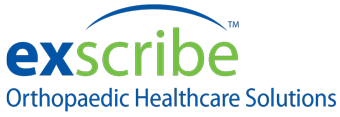How can EHR systems attract more providers?
The U.S. Centers for Medicare and Medicaid Services offers eligible hospitals and professionals incentives for implementing electronic health record systems, but these programs and applications are still not adopted by every health provider yet. A report completed by Mathematica Policy Research and the Harvard School of Public Health found that only 58.9 percent of hospitals have installed at least a basic EHR system as of 2013. The report also discovered that 78.4 percent of office-based physicians have implemented any type of EHR system. While these numbers are far better than they were in 2010, how can EHR systems attract the other 40 percent of hospitals and 22 percent of physicians that are not taking advantage of EHR benefits?
Meaningful use
The CMS recently changed the final rule of the meaningful use incentive programs. However, this was an attempt to alleviate the problems that eligible providers are having with attesting to stage 2 rather than an effort to attract other providers. The Washington Post reported that only 6 percent of hospitals are ready for stage 2 of meaningful use in 2014 and they were at risk of facing penalties. This could be intimidating to providers that do not use EHR systems. Implementing new software and cloud services to support it already has costs associated with it. The threat of penalties could cause many to not want to attest. A Medscape report of EHR usage found that 32 percent of physicians without systems believe that the costs of penalties are not worth the effort of implementation.
Technology
EHR technology is faced with a few problems, such as interoperability and hard-to-use interfaces. These issues could pose barriers to providers who have yet to introduce EHR systems to their clinics and hospitals. InformationWeek reported that much of this technology is still in its early stages. Data governance laws, external device support and cloud storage could all use improvements.
Until these health solutions are optimized for everyone to use, there will still be physicians who believe that EHRs are more complicated than they need to be. Integrating mobile device support and connections to medical devices could mitigate the issues associated with learning how to use new software. If blood pressure devices could immediately fill out the categories in a patient's EHR, then physicians will save time and effort associated with paper charts and EHRs. As it stands today, many doctors perceive the required dedication to implement not worth the benefits.
Data and better care
EHR systems do not readily show physicians the benefits of using them, which can be a cause for current adoption rates. Julia Alder-Milstein, public health professor at the University of Michigan, told The Washington Post that if physicians do not have data that displays their performance metrics, then it is difficult to determine and improve the value of EHR systems. If more physicians knew how EHR systems increased the quality of care, then they might be more likely to spread the benefits of the software rather than comment on their loss of free time.


